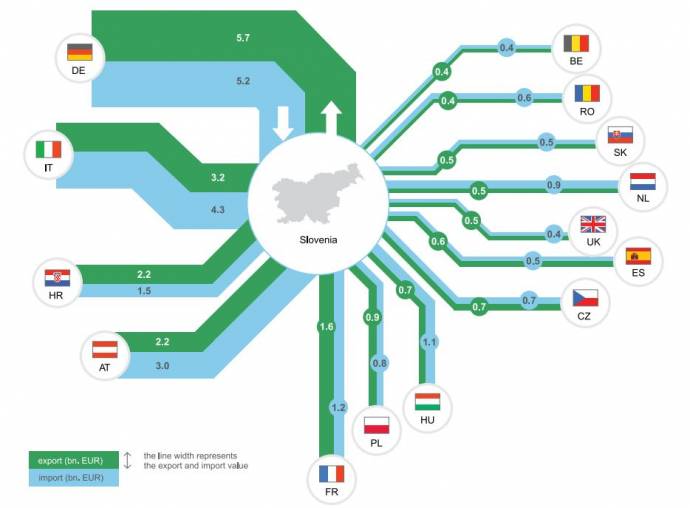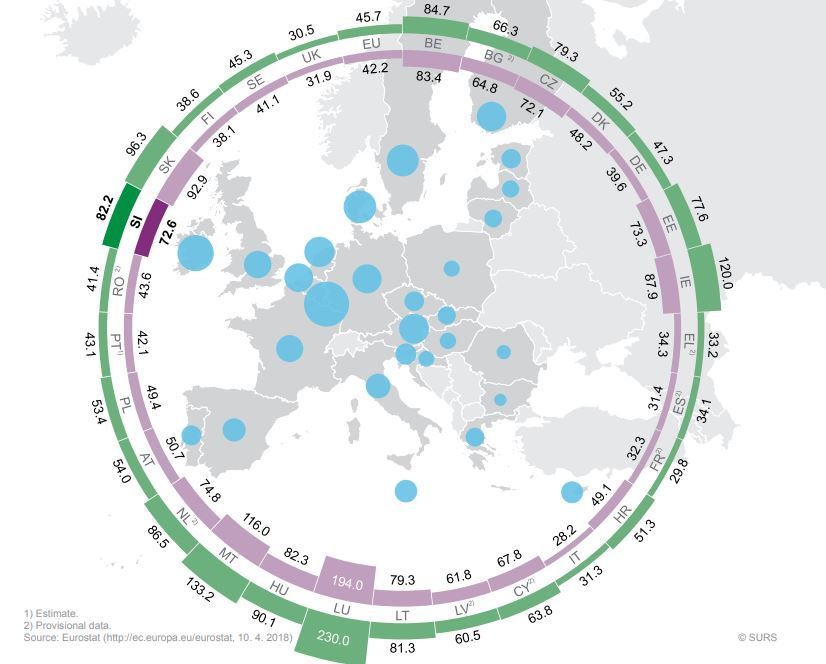The surplus is a result of a positive balance in the exchange of goods and services, while in other transactions the Slovenian economy recorded a deficit.
The surplus generated in the exchange of goods and services topped EUR 945m or 8.9% of GDP, while it reached EUR 898m or 9.1% of GDP in the same period last year.
In primary revenue, a deficit of EUR 131m was recorded, in current transfers it reached EUR 94m and in capital transfers EUR 57m.
The non-financial companies recorded a deficit of EUR 290m or 2.7% of GDP in the first quarter, according to preliminary estimates and was up by EUR 175m or 1.5 percentage points year-on-year.
This is the biggest deficit since the first quarter of 2009 but it is still much lower than those recorded before the global economic crisis.
Exports as a share of GDP. SURS.si
The Statistics Office attributes this to an increase in gross investments both in capital assets and in stock. To finance part of these investments, companies took out loans, which is customary, the office said.
In contrast, financial companies created a surplus of EUR 105m or 1% of GDP in the first quarter, up from EUR 54m or 0.5% of GDP from the first quarter of 2017.
The wider sector of the state generated a surplus of EUR 60m or 0.6% of GDP in what was its a fourth consecutive quarter with a surplus.
The last time it generated a deficit was in the first quarter of 2017, when the deficit reached EUR 110m or 1.1% of GDP.








